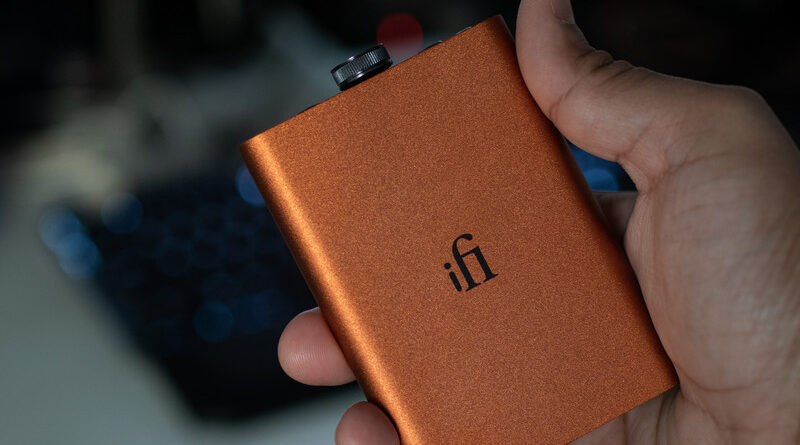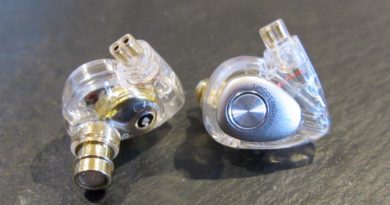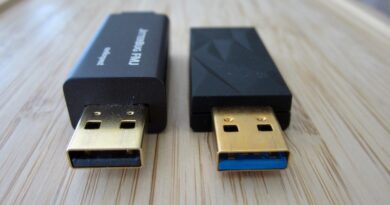iFi Audio Hip-DAC2 Review (1) – Subtle Improvements
Pros — Excellent build quality and industrial design
– Moderately powerful balanced output
– xBass and PowerMatch features are handy
– Dynamic, rich sound from the balanced out
– MQA hardware-level decoding
Cons — Hip-DAC2 can feel unwieldy when paired with large phones
– Narrow staging
– Somewhat colored tonality won’t suit neutrality seekers
– Single-ended output is underwhelming
– A proper line-out would be perfect
In this Article
INTRODUCTION
iFi Audio hit the homerun with the original Hip-DAC. It had excellent build, the design was unique, and the sound was different to most in the market with a warm, rich tuning that could power most reasonable headphones and IEMs.
The release of the Hip-DAC2 came as a surprise to me as I didn’t think the Hip-DAC was being outperformed by its peers. In fact, the Hip-DAC is still on of the best portable DAC/Amps under $250. On paper it appears that the Hip-DAC2 is mostly geared towards Tidal enthusiasts, having a major improvement in MQA decoding capabilities.
Let’s see if the Hip-DAC2 can prove itself to be just as good as its predecessor.
Note: the ratings given will be subjective to the price tier. iFi Audio was kind enough to send me the Hip-DAC2 as a loaner.
Earphones/Headphones used: Dunu Zen, Dunu Zen Pro, Final FI-BA-SS, Campfire Andromeda 2020, Sennheiser HD650, Sennheiser HD560S, Final Sonorous III.
Firmware versions: 7.30, 7.3b
Price, while reviewed: 190 euros. Can be bought from WOD Audio.
PHYSICAL THINGS AND USABILITY
PACKAGING AND ACCESSORIES
iFi Audio went for a minimalist package with the Hip-DAC2. You get the essentials: a type-C to USB type-A female cable (for connecting to phones), a USB type-A male to female cable (for connecting with the PC), and a type-C to USB type-A male cable for charging.
There is an optional case that you can buy but it cost 29 euros extra.
BUILD QUALITY
Build quality of the Hip-DAC2 mimics that of the original Hip-DAC and it is excellent. The housing is sandblasted aluminium with a Sunset Orange color scheme (vs Petrol Blue on the original). The volume pot has a silver-gray finish this time around whereas the OG had a golden knob.
There are two buttons on the left side of the volume pot (xBass and PowerMatch respectively) and two headphone outputs on the right side (4.4mm balanced and 3.5mm single-ended). The bottom of the device houses a USB type-A male port for connecting to devices, and a type-C port for charging.
The volume pot also acts as a power button and has two LEDs on both sides to indicate remaining charge (white for >75%, green for >25%, and red for >10% capacity). These LEDs also show the current sample rate and file format. The following image shows all the colors and their corresponding sample rate or format.
Engaging either xBass or PowerMatch lights up the tiny white LEDs underneath the buttons. Overall, excellent build quality with no noticeable room for improvement.
5/5
HANDLING
The Hip-DAC2 is fairly lightweight at 125gm, but due to the 70mm width can be awkward to hold in hand. This becomes more noticeable when you’re stacking the DAC/Amp with a large phone (most modern phones are large anyway). As a result, I preferred to use the Hip-DAC2 with my laptop rather than on-the-go with my phone. Also, the aluminium shell is quite slippery, so not the best experience when using as a portable device.
3.5/5
BATTERY LIFE
Clocking at around 8hrs of playback time, the battery life on the Hip-DAC2 is decent if unremarkable. The 2200mAh battery pack could have been upgraded over the original but that would increase weight and thickness so it’s a compromise iFi has to make. Recharging takes about 3 hours on a typical phone charger.
3.5/5
INTERNAL HARDWARE
iFi Audio are most comfortable with using the BurrBrown chipset and here it appears again. The BB DSD1793 chipset offers native DSD encoding and with the updated XMOS controller can now decode MQA files at a hardware level. This feature, admittedly, is of little use to non-TIdal HiFi users but it doesn’t hurt to have an extra feature.

The potentiometer is fully analog, thus not facing some of the limitations that digital potentiometers may have. However, being analog in nature, it may degrade over time. The Global Master Timing clock has been upgraded here over the original Hip-DAC. The amp sections remains unchanged on paper, with quad JFET OV4627 op-amps (customized for iFi Audio). The amp circuit also uses a dual-mono design for the balanced output.

Other extras include the xBass feature which is an analog EQ and mostly aims to “fix” the sub-bass roll-off issue on open-back headphones. In reality, many open-back headphones suffer from distortion in those regions and applying an EQ might cause further distortion and clipping. The other feature is the PowerMatch button that acts as a gain switch for headphones (iFi advises keeping it off for sensitive IEMs).
Speaking of power outputs, the Hip-DAC2 outputs 0.4W @ 32ohms from the balanced out and 280mW @ 32ohms from the single-ended output (which also supports their proprietary S-balanced tech). The voltage swing can go as high as 6.3Vrms from the balanced out and this comes handy when driving high impedance dynamic driver headphones.
The PCB design is excellent and the components are high quality so I have no qualms about the internals of the Hip-DAC2. I would have loved it even more had it had a true line-out with fixed voltage output. Pairing the Hip-DAC with external amps could make it a great desktop solution. Maybe something for the Hip-DAC3.
TONALITY AND TECHNICALITIES
The general sound of the iFi Hip-DAC2 can be summarized as warm-neutral. It has the characteristic iFi Audio warmth with smooth treble and an engaging midrange. The bass is mostly neutral but can be pushed higher with the xBass switch.
One area where the Hip-DAC2 falls short of its peers is the soundstage width. You won’t have the stage width of some of the ESS chipset-based DACs in the price range. On the plus side, the imaging was precise for the most part, provided you have headphones/IEMs with good imaging. Treble also doesn’t exhibit the rather common “glare” you find in many dongles these days.
One thing to note is that changing the firmware can bring subtle changes to the sound due to changes in reconstruction filter. I used both the default 7.30 firmware and the 7.3b firmware. The former had a more laid-back treble and had a slightly wider stage, while the latter had sharper treble with more up-front upper-mids. Do note that these are subtle changes and won’t drastically alter the sound.
Overall transparency and resolution was good for the price point, though again I could hear some roll-off in the upper-treble frequencies and separation was nothing exceptional. Moreover, the background hiss is noticeable with sensitive IEMs, so if you want a very dark background the Hip-DAC2 will disappoint.
PAIRING NOTES
Sennheiser HD650
The Sennheiser HD650 is one of the few headphones that scale according to the source quality. On paper, the Hip-DAC2 has the required voltage swing to power it, but reality is a mixed bag. The HD650 got loud from the balanced out but lacked the dynamics it can display on a more powerful amp. Separation was not the best either. I would not recommend the Hip-DAC2 for such high impedance dynamic drivers if you want to maximize their potential.
Final Sonorous III
Final Sonorous III is a closed back pair of headphones and are very efficient. Despite the efficiency they are quite transparent to source quality. The Hip-DAC2 drove them excellently with no loss in dynamics and the bass was quite pleasant. The upper-mids had more glare than usual, though, and the treble extension was lacking somewhat. Nonetheless, I would call the Hip-DAC2 a good pairing for efficient dynamic driver headphones.
Hifiman Sundara
On the planar magnetic side, we have the Hifiman Sundara. With a 94dB @ 37ohms efficiency, these are not the easiest headphones to drive. The Hip-DAC2 did get them loud with good enough dynamics. Moreover, the xBass switch was handy to add some slam and physicality to Sundara’s otherwise flat, dry bass. I would call these two a good pairing, though Sundara can do better when paired with high end amps.
Dunu Zen and Dunu Zen Pro
The Dunu Zen and Zen Pro both exhibited hiss from the balanced out of the Hip-DAC. However, the overall sound was quite pleasant. The Hip-DAC2 was not as resolving as the Questyle CMA-400i or Lotoo PAW 6000 with the Dunu Zen and Zen Pro, but none of its $200 peers sound any better with these IEMs so there’s that.
In general, the Hip-DAC2 pairs well with moderately efficient IEMs and some inefficient ones. The warm signature complements somewhat analytical headphones and IEMs. On the other hand, I would not recommend it for power-hungry planar magnetic headphones and IEMs, or very high impedance dynamic driver headphones. Headphones and IEMs with a warm tonality might not be the best pairing as well, e.g. Final E5000.
SELECT COMPARISONS
vs iFi Hip-DAC
There is little to externally differentiate between the original Hip-DAC and the Hip-DAC2 other than the different paintjob. In terms of sound, the changes are mostly minor. The Hip-DAC2 has more transparency in the upper-mids (OG Hip-DAC sounded smoothed out in that region) and slightly wider stage. The imaging also seems somewhat more precise though I’m not too convinced about this improvement.
Most noticeable difference will be for those who believe in MQA. I am not an MQA user and these supposed improvements were thus untested. I mostly stuck with DSD and PCM files and for those, the OG iFi Hip-DAC is nearly as good as the newer version.
vs Apogee Groove
Apogee Groove has a very different amp architecture and is not really smartphone-friendly due to its higher power-draw and lack of internal battery. The amp architecture is also very different and has a very high output-impedance that messes with most multi-driver IEMs.
I found the Groove to pair really well with high impedance dynamic driver headphones, esp the HD650 and the likes. Some inefficient single-dynamic IEMs like the Final E5000 also pair excellently with the Groove. Unfortunately, the Groove is abysmal with low-impedance low-sensitivity planar magnetic headphones. They are also not as intuitive to operate as the Hip-DAC and lacks the xBass/PowerMatch features.
Overall, the Hip-DAC2 is more universal whereas the Groove is superb with a select few headphones and IEMs but below-par with the rest.
CONCLUDING REMARKS
Holistically, the iFi Hip-DAC2 is a minor improvement over the original. I don’t think existing Hip-DAC owners need to upgrade to the Hip-DAC2 unless they are fully into the Tidal ecosystem and appreciates hardware MQA decoding.
That being said, those who are looking for a battery-powered DAC/Amp for desktop or laptop use and occasional phone pairing, the Hip-DAC2 is pretty much one of the best under $200. The original Hip-DAC is still available at Amazon Germany and costs $20 less, but I think you can just get the newer version since the price increase is marginal.
The Hip-DAC2 remains one of the best portable DAC/Amps under $200 and rightly earns my recommendation for using with desktops and laptops. Sadly, it is still not a good pairing for sensitive IEMs and leaves room for improvement when powering planar magnetic headphones. Something’s gotta give, after all.
MY VERDICT
4/5
A minor upgrade to an otherwise great portable DAC/Amp.
DISCLAIMER
Get it from WOD Audio.
Our generic standard disclaimer.
PHOTOGRAPHY
You find an INDEX of our most relevant technical articles HERE.







